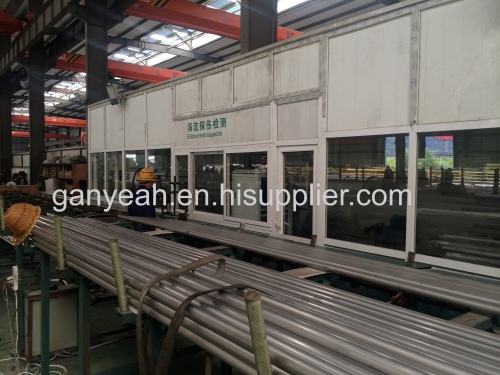2205 UNS S31803 Duplex Steel Tube
| Grade(UNS): | Duplex Stainless Steel:
S32001, S32003, S31500, 2205(1.4462); S32304,(1.4362);S31803,2507 (S32750),S32760(1.4501);S32101(1.4162);
Super Austenitic Stainless Steel: 904L, S30432, S31042, 6Mo (S31254, N08367)
|
| Outside Diameter(OD): | 6 - 2032mm |
| Wall Thickness(WT): | 0.50 - 60mm |
| Standards(Norm): | EN 10216-5; DIN 17456, DIN 17458, DIN 2462, DIN 17455 |
| GB/T14975; T14976; T13296; GB5310; |
| ASTM A213, A269, A312, A511, A789, A790, A928, A999, A1016, ASTM B161, ASTM B163, ASTM B165, ASTM B167, ASTM B338, ASTM B407, ASTM B423, ASTM B444,ASTM B619, ASTM B622, ASTM B626, ASTM B668, ASTM B677, ASTM B829 |
| JIS G3459, JIS G3463, JIS G3446, JIS G3447, JIS G3448, JIS G3468 |
| GOST 9940;GOST 9941; |
| Fabrication | Hot forming is carried out at 1150-950˚C. However, it should be borne in mind that the mechanical strength of the material is low at high temperatures. At temperatures below 950˚C embrittling can take place on account of the combination of strain and exposure in the sigma phase field. Quench annealing is normally required after hot forming.316, 317L and even the 20Cr-25Ni grades. It is highly resistant to stress-corrosion cracking in sodium chloride, seawater and many other environments. Cold forming owing to the high yield strength of the steel, greater forces are normally required for the cold forming of S31803/ S32205 than for austenitic steels.
|
| Machining | High alloy duplex steels, such as S31803/S32205, are generally more difficult to machine than conventional austenitic stainless steels such as 17-12-2.5. Duplex steels have a somewhat different property profile than highly alloyed austenitic stainless steels. The main difference is that duplex grades are relatively easier to machine with high speed steel tools than with cemented carbide tools, compared to austenitic stainless steels with a similar alloy content.
|
| Welding | Duplex UNS S31803/ S32205 possesses good weldability. The following instructions should be followed: The material should be welded without preheating. The material should be allowed to cool between passes, preferably to below 150℃. The recommended heat input in order to achieve a good balance between ferrite and austenite in the weld is 1.0-2.5 kJ/mm (aim at 30-60% ferrite). The energy input should be adjusted in proportion to the thickness of the material to be welded. A high energy input and slow cooling reduce the amount of ferrite. Duplex UNS S31803/ S32205 can be welded using the following methods: Welding with covered electrodes (SMAW) Gas shielded arc welding such as GTAW (TIG), plasma, GMAW (MIG) and FCW. Submerged-arc welding (SAW) Post weld heat treatment is not normally necessary. In cases where heat treatment is considered, for example for stress relieving, this should be carried out at 1020-1070℃.
|





















